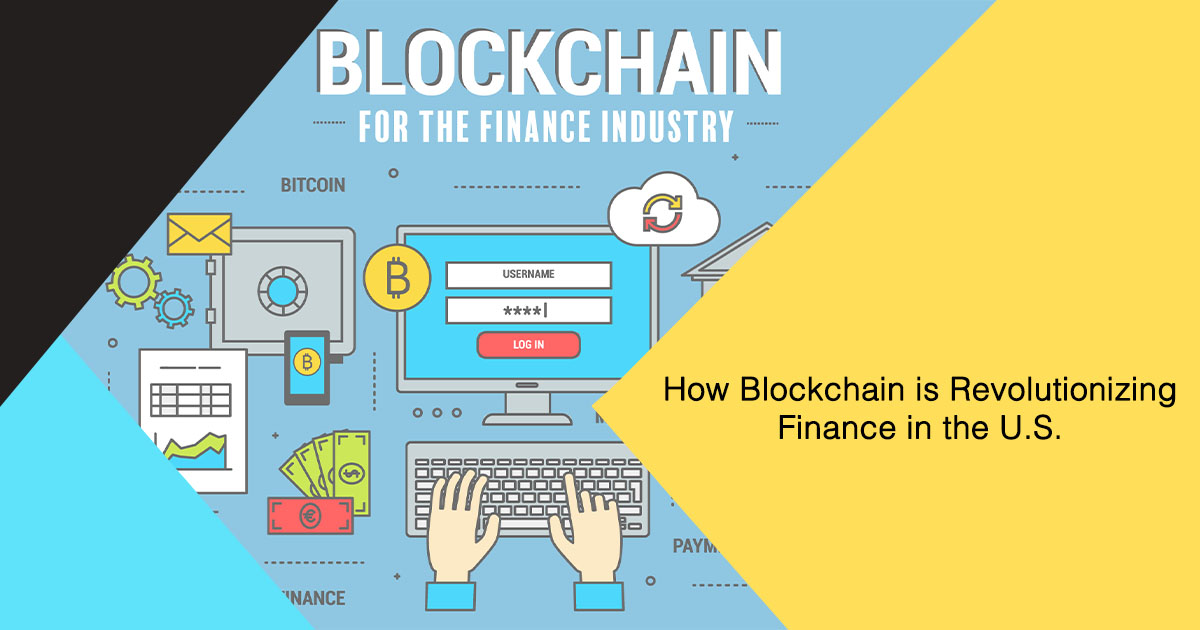How Blockchain is Revolutionizing Finance in the U.S.

Blockchain technology is revolutionizing finance in the U.S. by providing a secure, transparent, and decentralized approach to transactions, data storage, and asset management. Its disruptive potential extends across banking, payments, asset trading, lending, and compliance. Here are some of the most significant ways blockchain is transforming the financial sector:
1. Decentralized Finance (DeFi)
- DeFi refers to financial services on a blockchain, allowing users to access loans, insurance, savings, and investments without intermediaries like banks or brokers.
- Platforms like Ethereum power DeFi protocols that offer yield farming, lending, and borrowing through smart contracts, giving users more control over their assets while minimizing fees.
2. Real-Time Payments and Settlements
- Blockchain enables instant cross-border payments with reduced fees compared to traditional payment systems, where transactions can take days to settle and often incur high fees.
- Payment systems based on blockchain, such as Ripple and Stellar, use decentralized ledgers to enable faster, more efficient cross-border transactions for banks and individuals.
3. Enhanced Transparency and Security
- Blockchain’s public ledger system records all transactions, making it tamper-resistant and easily auditable, which can reduce fraud, improve trust, and enhance transparency in financial transactions.
- This transparency can streamline audits and compliance, as all records are available in real-time, reducing time and costs associated with compliance checks.
4. Tokenization of Assets
- Blockchain enables the tokenization of assets, where physical or traditional assets like real estate, stocks, or commodities are converted into digital tokens that represent ownership on a blockchain.
- Tokenization allows fractional ownership, making high-value assets accessible to more investors, and can facilitate easier transfers and liquidity in traditionally illiquid markets.
5. Improved KYC/AML Compliance
- Blockchain technology simplifies and strengthens Know Your Customer (KYC) and Anti-Money Laundering (AML) compliance. With identity data securely stored on a blockchain, financial institutions can easily verify identities and detect fraudulent activities.
- Using blockchain for KYC/AML reduces redundancy, as customers’ verified identities can be securely shared across financial institutions, reducing compliance costs and onboarding time.
6. Smart Contracts in Lending and Borrowing
- Smart contracts are self-executing contracts with terms directly written into code. In finance, they automate the execution of agreements such as loan issuance and repayment, reducing the need for intermediaries and paperwork.
- Platforms like Compound and Aave in the DeFi space use smart contracts to facilitate peer-to-peer lending and borrowing, providing users with competitive rates and full control over the lending process.
7. Digital Identity Verification
- Blockchain-based identity solutions can provide secure and verifiable identities for individuals and companies, reducing the risk of identity fraud and improving user experience in financial services.
- Digital identities on a blockchain are cryptographically secured, enabling efficient onboarding and reliable identity verification for various financial services.
8. Blockchain for Fundraising (ICO, STO, IEO)
- Blockchain technology enables new fundraising mechanisms, such as Initial Coin Offerings (ICOs), Security Token Offerings (STOs), and Initial Exchange Offerings (IEOs), allowing startups and projects to raise capital without traditional venture capital.
- STOs, which represent real securities like shares or bonds on a blockchain, are particularly attractive as they comply with securities laws, making them a safer investment vehicle compared to ICOs.
9. Supply Chain Finance
- Blockchain improves transparency and traceability in the supply chain, which is valuable for trade finance, allowing all participants to see each transaction along the chain.
- Through blockchain, lenders and other parties involved in trade finance can track goods, verify transactions, and reduce fraud by accessing a shared, immutable ledger.
10. Enhanced Data Security and Privacy
- Blockchain uses cryptography to secure user data, making it a promising tool for protecting sensitive financial information against breaches and hacks.
- In blockchain-based systems, users have control over their data and can share only necessary information, helping to improve privacy and trust between consumers and financial institutions.
11. Reducing Costs and Increasing Efficiency
- Blockchain eliminates the need for middlemen and intermediaries, reducing transaction costs and making processes faster and more efficient. This reduction in fees and delays is beneficial for both consumers and financial institutions.
- In addition, blockchain’s automation capabilities lower administrative costs associated with tasks like record-keeping, verification, and reconciliation.
12. Integration with Central Bank Digital Currencies (CBDCs)
- Many countries, including the U.S., are exploring central bank digital currencies (CBDCs), which are digital versions of national currencies that could operate on a blockchain.
- A CBDC would allow the Federal Reserve to issue digital dollars directly to the public, potentially improving financial inclusion and enabling faster payments while providing a regulated digital currency option.
13. Decentralized Exchanges (DEXs)
- Decentralized exchanges allow users to trade cryptocurrencies and tokens directly from their wallets without a centralized authority. DEXs operate on a blockchain and provide peer-to-peer trading, improving security and transparency in asset trading.
- Popular DEXs, such as Uniswap and SushiSwap, have grown significantly, offering liquidity pools and enabling users to earn transaction fees, while reducing counterparty risks.
Challenges and Considerations
- Regulatory and Compliance Uncertainty: The rapidly evolving blockchain space faces regulatory challenges, as governments work to set standards for blockchain applications in finance, particularly in areas like DeFi and tokenized assets.
- Scalability and Energy Consumption: Some blockchains, particularly those using proof-of-work consensus, face scalability and environmental concerns. Many developers are shifting to more efficient protocols like proof-of-stake to address these issues.
- Security and Privacy: Although blockchain is secure, DeFi platforms and other blockchain applications can be vulnerable to hacks and exploits, underscoring the need for strong security measures.
Conclusion
Blockchain is significantly reshaping finance in the U.S. by introducing decentralization, transparency, and automation to traditional financial systems. With applications ranging from real-time payments to secure data sharing, blockchain offers new levels of efficiency and security, empowering both businesses and consumers. While challenges remain, blockchain’s impact on finance is expected to deepen as technology advances and regulatory frameworks evolve.










